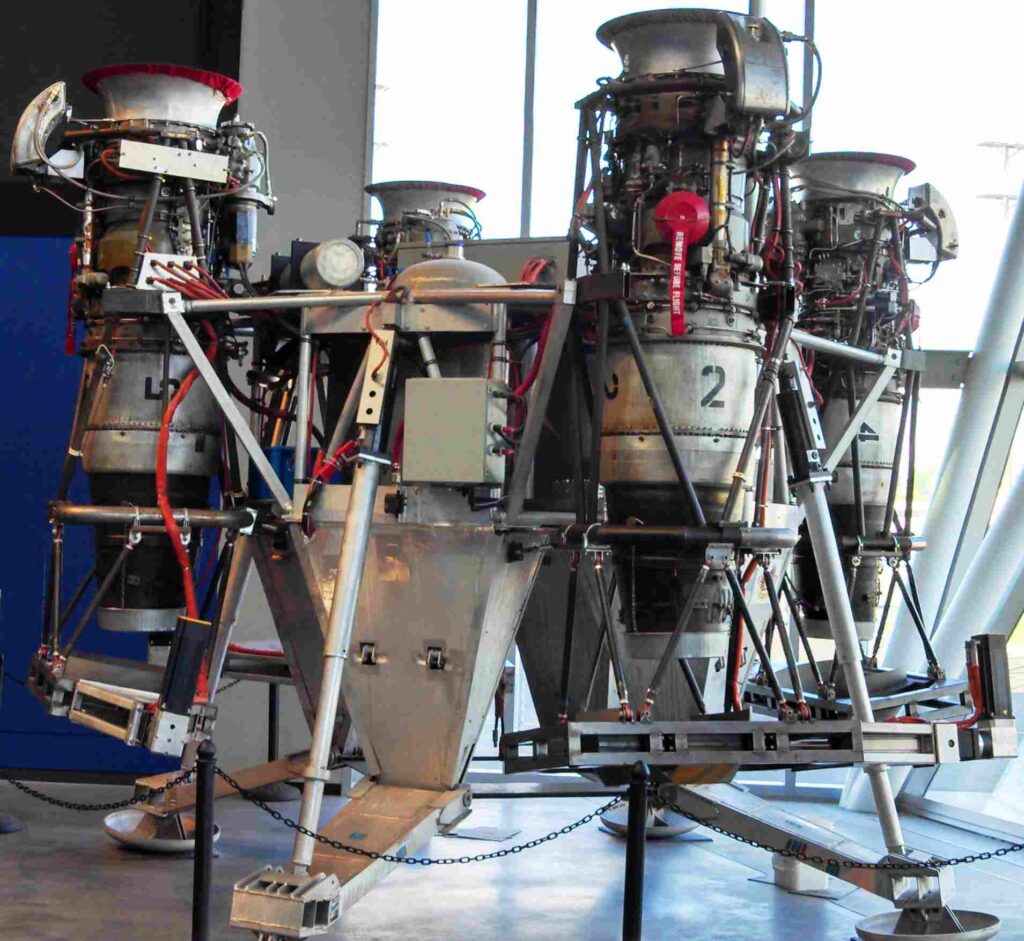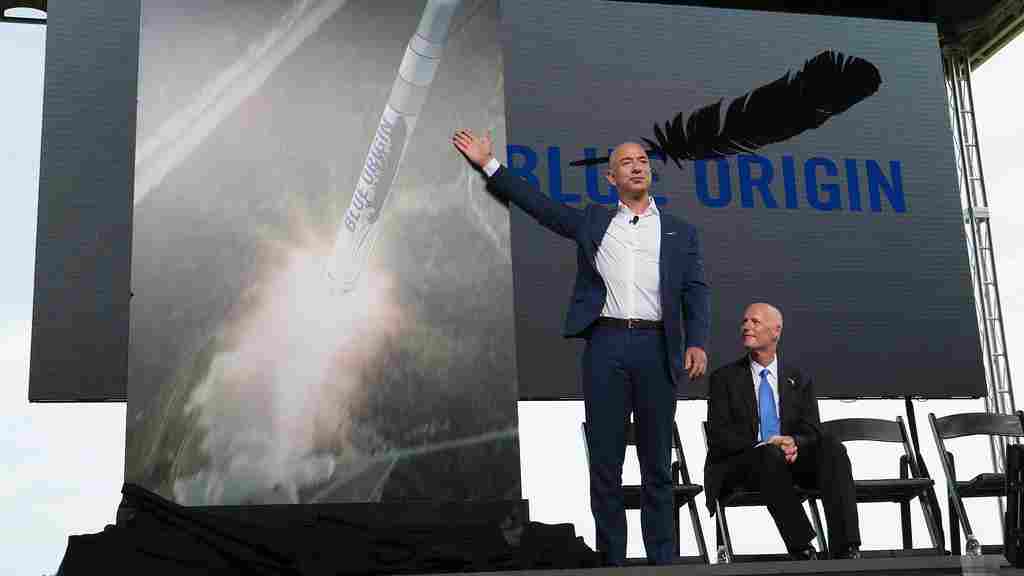Blue Origin’s dream of joining the heavy-lift elite took another blow when its second New Glenn test flight—a critical NASA mission to Mars—was scrubbed after three consecutive countdown holds. The launch, originally scheduled for November 9th, 2025, was meant to carry NASA’s EscaPADE (Escape and Plasma Acceleration and Dynamics Explorers) mission to a phasing orbit around Mars.
But as history repeated itself, bad weather, technical hiccups, and even a wandering cruise ship all conspired to delay the mission once again. And, true to form, Elon Musk couldn’t resist poking fun at his longtime rival Jeff Bezos, turning the whole situation into a viral moment on X (formerly Twitter).
Let’s break down what really happened, why the mission matters, and what Musk said that had the internet in stitches.
Blue Origin’s New Glenn: A Bold Mission on Only Its Second Flight
On January 16th, 2025, New Glenn completed its first flight, a suborbital success that set the stage for something bigger. Ten months later, on November 9th, tens of thousands tuned in live on X to witness the rocket’s first commercial configuration launch—an ambitious step for a vehicle still in testing.

The mission’s payload, NASA’s EscaPADE twins, were designed by Rocket Lab, together weighing over one ton. These two spacecraft were meant to orbit the L2 Lagrange point, where they would wait until the next Mars transfer window in 2026 before beginning their interplanetary journey.
That’s a high-stakes job, especially for a rocket flying for only the second time ever. While SpaceX’s Falcon 9 and Falcon Heavy have launched complex missions dozens of times, Blue Origin was taking a massive leap into deep space reliability.
Countdown Chaos: Why New Glenn’s Launch Was Scrubbed
Everything seemed set for a historic liftoff—until it wasn’t.
1. Weather Holds
Dark, ominous clouds rolled over Cape Canaveral early that morning. The team initiated the first hold due to poor weather and lightning risk. After a brief improvement, the countdown resumed.
2. Ground Support Glitch
Shortly after, another pause—this time due to a ground support equipment issue, possibly related to the LVHD arm retraction system. Engineers worked feverishly to troubleshoot the problem.
3. The Cruise Ship Incident
Then came the most bizarre hold of all: a cruise ship wandered into the keep-out zone, violating safety protocols. Range safety officers were forced to delay the countdown yet again.
One viewer on X even joked that Elon Musk himself had sailed a yacht into the exclusion zone just to troll Jeff Bezos. While obviously a joke, it captured the internet’s mood perfectly.
Finally, after three consecutive holds, the team attempted one last countdown. But when cumulus clouds returned and conditions worsened, Blue Origin made the tough call: the launch was officially scrubbed and rescheduled for November 12th.
Blue Origin later posted, “Our next launch attempt is no earlier than Wednesday, November 12th, due to forecasted weather and sea state conditions.”
For many fans, it was déjà vu—another delay for a rocket that had already waited years for its moment.
Elon Musk’s Reaction: “Morning Glory”
You could almost predict it. As soon as Jeff Bezos posted an update about the scrubbed launch, Elon Musk slid into the comments on X with a cheeky two-word reply:
“Morning glory.”
Classic Musk humor—short, irreverent, and instantly viral.
Why was it funny? Because New Glenn must be “erected” vertically on the pad using a transporter erector, unlike SpaceX’s Starship, which stands tall and ready by design. Musk’s jab was a double entendre, referencing both the rocket’s shape and its complicated ground setup.

Within minutes, memes flooded X comparing New Glenn’s sleek blue body to Starship’s stainless-steel giant, with captions like “When you try to compete with the GOAT.”
New Glenn vs. Starship: A Clash of Titans
Let’s look at the raw numbers behind this friendly (but fierce) rivalry.
| Rocket | Height | Diameter | Payload to LEO | Payload to GTO | Thrust |
|---|---|---|---|---|---|
| Blue Origin New Glenn | 98 m | 7 m | 45 tons | 14 tons | 1,780 tons |
| SpaceX Starship (V3) | 124 m | 9 m | 180–200 tons | 80+ tons | 8,200 tons |
So, in simple terms, one Starship equals roughly four New Glenns in lift capacity.
And Musk isn’t stopping there. He’s already teased Starship Version 4 (2027–2028)—with stretch tanks, 142 meters in height, and up to 300 tons to LEO. That’s six or seven New Glenns’ worth of payload in one flight!
It’s a staggering gap that shows just how far SpaceX’s engineering scale has evolved.
The Musk–Bezos Rivalry: Two Billionaires, One Space Dream
This isn’t the first time Musk has roasted Bezos online. Their rivalry goes back two decades, to the early 2000s, when both men envisioned reusable rockets as the key to making space travel affordable.
The “More Pointy” Era
When Blue Origin revealed a render of New Shepard with a rounded nose cone, Musk immediately tweeted, “Your rocket needs to be more pointy,” alongside a side-by-side image of Starship versus New Glenn.
He later admitted on the Joe Rogan Podcast that he literally told his team to make Starship “more pointy” because “round isn’t scary—pointy is scary.” The line was inspired by a comedy scene from Sacha Baron Cohen’s “The Dictator.”
Politics, Power, and Petty Posts
Their feud isn’t limited to rockets. In 2024, Musk accused Bezos of telling friends that Donald Trump would lose and that they should sell their Tesla and SpaceX stock—a claim Bezos denied directly with a curt “Nope. 100% not true.”
Musk’s half-apology reply—“Then I stand corrected”—did little to stop the tweet from going viral. Tesla’s stock jumped 20% in the following week, and Musk used the buzz to reinforce his pro-Trump stance, while Bezos found himself under renewed political scrutiny.

What Comes Next for Blue Origin and NASA
Despite the mockery, Blue Origin isn’t giving up. The rescheduled New Glenn flight now carries even more importance—not just for the NASA EscaPADE mission, but for Blue Origin’s reputation.
A Dual Payload
In addition to NASA’s twin spacecraft, Viasat is contributing a secondary payload to test next-gen communication technologies for NASA’s future Mars and lunar missions.
The First Ocean Landing Attempt
For the first time ever, Blue Origin’s drone ship “Jacklyn’s Return” is heading into the Atlantic Ocean to attempt a booster landing at sea—a key step toward full reusability.
If successful, Blue Origin could secure NASA’s confidence as a second heavy-lift partner, reducing dependence on SpaceX’s Falcon Heavy for critical missions like the Lunar Gateway modules.
Success here would also fast-track Blue Origin’s certification for the Artemis HLS (Human Landing System) program, helping them compete directly with Starship for moon logistics.
If New Glenn Succeeds: A Turning Point in the Private Space Race
A flawless launch and recovery would transform Blue Origin’s image overnight—from a cautious latecomer to a serious challenger in orbital launch.
Industry Impact
- More competition could lead to lower costs and faster innovation across the board.
- Smaller space startups might gain confidence to pursue reusable tech of their own.
- NASA and DoD would gain another certified heavy-lift provider, easing the risk of dependency.
For SpaceX
While success for Blue Origin would mean more competition, it would also motivate SpaceX to accelerate Starship Block 3 and fine-tune Falcon 9 pricing to stay dominant.
Healthy rivalry benefits everyone—from engineers to end-users of satellite constellations and lunar cargo services.
If New Glenn Fails: SpaceX’s Dominance Continues
Of course, the stakes are sky-high. If New Glenn’s booster crashes or fails to perform, it would trigger a longer evaluation phase by NASA and likely reinforce SpaceX’s monopoly in the heavy-lift category for another few years.

Customers would flock back to Falcon Heavy, and Musk would once again prove that experience trumps hype.
Either way, the second New Glenn flight marks a pivotal moment in private space history—one that will define how soon we can see multiple American companies launching to the Moon and Mars.
FAA’s New Rule Could Shake Up the Entire Launch Industry
As if delays weren’t enough, the Federal Aviation Administration (FAA) dropped a bombshell on November 10th, 2025:
All commercial space launches and reentries are banned during daytime hours (6 a.m.–10 p.m.) until further notice.
The rule, introduced amid the ongoing U.S. government shutdown, is designed to ease pressure on overworked air traffic controllers. Many FAA staff are either furloughed or working without pay, leading to safety concerns.
The Impact on SpaceX and Others
- Falcon 9: 57% of its launches occur in daylight.
- Falcon Heavy: 72% daytime launches.
- Starship: 54% daytime tests.
Now, with launches restricted to 10 p.m.–6 a.m., SpaceX and others must operate in darkness—complicating visibility, stage separation monitoring, and recovery logistics.
This could slow down SpaceX’s Starlink deployment schedule, reduce annual cadence, and open a small window for China’s Long March rockets to catch up in total launches.
Critics call the rule “short-sighted and outdated”, arguing that the U.S. should be investing in automated airspace coordination and dedicated launch corridors instead of restricting flights.
The Bigger Picture: A New Era of Rivalry, Risk, and Resilience
From delayed launches to online banter, the Musk–Bezos rivalry continues to shape how the world views private spaceflight.
But beyond the memes and competition, this is a story of engineering courage. Blue Origin’s cautious testing and Musk’s relentless iteration both aim toward the same goal: making humanity multiplanetary.
As New Glenn’s next launch window approaches, all eyes are once again on Cape Canaveral. Will Blue Origin finally achieve a successful sea landing and deliver NASA’s payload flawlessly? Or will Elon Musk get another chance to tweet a sly remark and remind everyone who still rules the launch pad?
Conclusion: Will Blue Origin Rise or Fall Again?
The scrubbed New Glenn launch wasn’t just another technical delay—it symbolized the tension, ambition, and rivalry driving the modern space race.
Elon Musk’s “Morning Glory” quip may have won the meme war for now, but Jeff Bezos’s Blue Origin still holds the potential to rewrite the future if it can overcome these early setbacks.
For NASA, the stakes are practical: reliable competition means more options and better pricing. For the space industry, it’s about proving that private companies can safely deliver interplanetary missions.
Whether Blue Origin’s next launch succeeds or fails, one thing’s clear—the battle for the stars between Musk and Bezos is far from over. And as the rockets grow taller and the tweets grow sharper, the rest of us can only watch in awe as these billionaires push the limits of what’s possible.
FAQs
1. Why was Blue Origin’s New Glenn 2nd launch scrubbed?
The New Glenn 2nd launch was scrubbed due to a combination of bad weather, a technical issue with ground support equipment, and a cruise ship entering the launch exclusion zone. After three consecutive holds, Blue Origin officially postponed the launch to November 12th, 2025.
2. What NASA mission was New Glenn supposed to launch?
The rocket was carrying NASA’s EscaPADE mission, which consists of two twin spacecraft built by Rocket Lab. These satellites are designed to study the magnetosphere and plasma environment around Mars.
3. When will Blue Origin try launching New Glenn again?
According to Blue Origin’s update on X (Twitter), the next launch attempt is scheduled no earlier than November 12th, 2025, depending on weather and sea state conditions.
4. What did Elon Musk say about Blue Origin’s scrubbed launch?
After the scrub, Elon Musk commented “Morning glory” under Jeff Bezos’s post, poking fun at how New Glenn is erected vertically using a transporter, unlike SpaceX’s Starship, which stands upright by default.
5. Why did Elon Musk call New Glenn “Morning Glory”?
Musk’s “Morning Glory” comment was a cheeky double entendre—mocking both the rocket’s appearance and the fact it needs to be lifted into position. It was classic Musk humor that instantly went viral on X.
6. How tall is Blue Origin’s New Glenn rocket?
New Glenn stands approximately 98 meters (322 feet) tall with a 7-meter diameter, making it one of the largest rockets ever built—though still smaller than SpaceX’s Starship.
7. How does New Glenn compare to SpaceX’s Starship?
Starship (V3) is significantly larger, standing 124 meters tall, 9 meters wide, and capable of lifting up to 200 tons to Low Earth Orbit, nearly four times New Glenn’s payload capacity. Starship also produces 4.6 times more thrust.
8. What is the rivalry between Elon Musk and Jeff Bezos about?
The Musk–Bezos rivalry stems from both billionaires competing to dominate the private space industry. Musk’s SpaceX and Bezos’s Blue Origin have clashed over rocket designs, NASA contracts, and even political influence.
9. Did Elon Musk ever compliment Blue Origin?
Surprisingly, yes. Before the “Morning Glory” joke, Musk actually wished Blue Origin “Godspeed” before their launch—showing cautious respect for the high-risk NASA Mars mission.
10. Has Blue Origin ever landed a New Glenn booster before?
Not yet. The upcoming second flight includes the first attempt to land a New Glenn booster on the drone ship “Jacklyn’s Return” in the Atlantic Ocean. If successful, it will mark Blue Origin’s first step toward reusability.
11. What happens if the New Glenn booster landing fails?
A failed booster landing would extend Blue Origin’s evaluation phase and delay NASA certification. It would also strengthen SpaceX’s dominance in the heavy-lift market for at least another 2–3 years.
12. How does Blue Origin’s EscaPADE mission help NASA?
NASA’s EscaPADE mission will collect valuable data on Mars’ magnetosphere, helping scientists understand solar wind interactions and atmospheric loss, crucial for future human missions to Mars.
13. What is the FAA’s new rule about rocket launches?
The FAA has temporarily banned all commercial space launches during daytime hours (6 a.m.–10 p.m.) due to staffing shortages during the government shutdown. Launches can now only occur at night.
14. How does the FAA rule affect SpaceX and Blue Origin?
Both companies face major scheduling disruptions. Over 57% of SpaceX’s launches and nearly all of Blue Origin’s tests occur in daylight. Nighttime-only windows will slow Starlink deployments and test flights.
15. What is SpaceX’s advantage over Blue Origin right now?
SpaceX has a massive lead in flight experience, with hundreds of successful launches and booster recoveries. Its reusable Falcon 9 and Falcon Heavy rockets have proven reliability unmatched by any competitor.
16. How could Blue Origin’s success help NASA?
If New Glenn succeeds, NASA gains a second reliable heavy-lift partner, reducing dependence on SpaceX and increasing launch flexibility for Moon and Mars missions. It would also foster healthy competition in pricing and innovation.
17. What is the significance of the New Glenn 2nd flight for Blue Origin?
This mission is a make-or-break milestone. It will test New Glenn’s booster reusability, payload reliability, and NASA partnership capabilities—all essential for future lunar and interplanetary missions.
18. What’s next for Elon Musk and SpaceX after this?
SpaceX continues to push toward Starship V3 and V4, aiming for 300 tons to LEO and full reusability by 2028. Meanwhile, Musk plans to expand Starlink, complete Mars cargo flights, and maintain global launch dominance.
Read More:
- ‘You chose ambition’: Tesla Chair hails shareholders for backing Elon Musk’s vision
- SpaceX’s next project will produce Starships at a level that sounds impossible
- Tesla provides vehicles for German firefighters’ EV training program
- Tesla makes Elon Musk’s new compensation package official
- Elon Musk teases huge merger: ‘Trending towards convergence’

